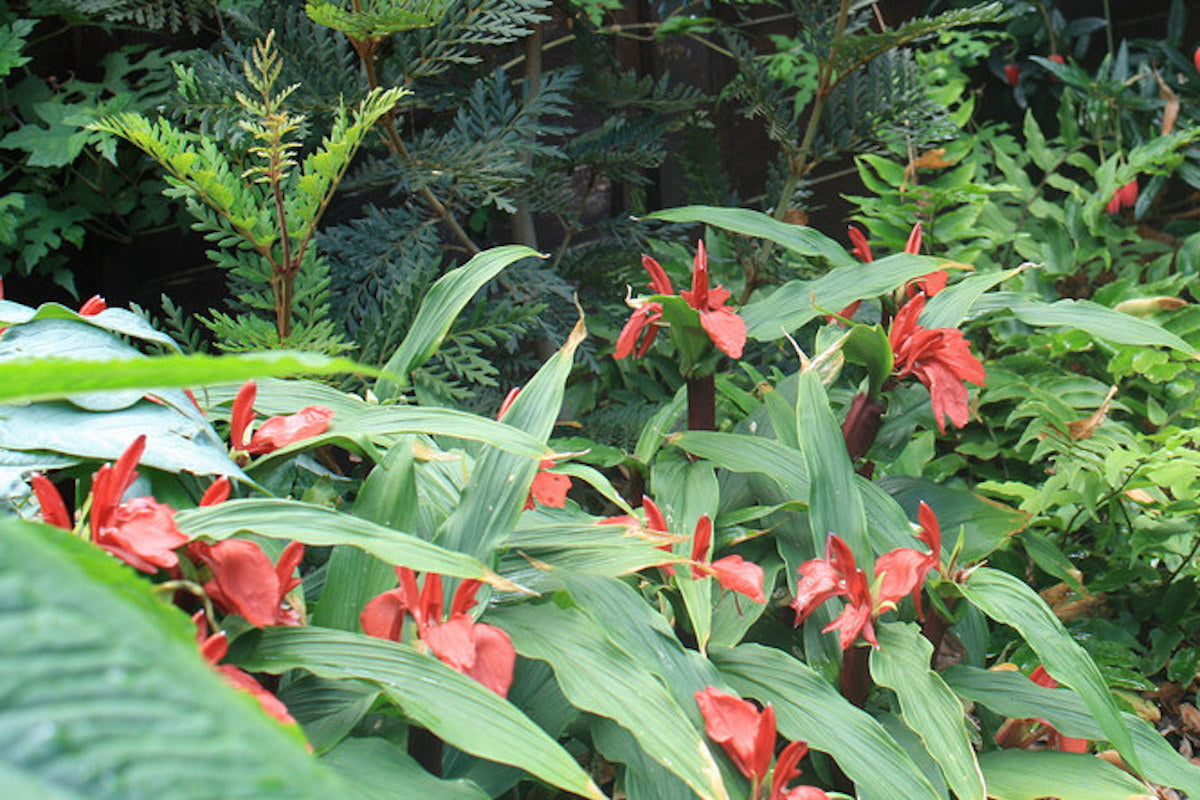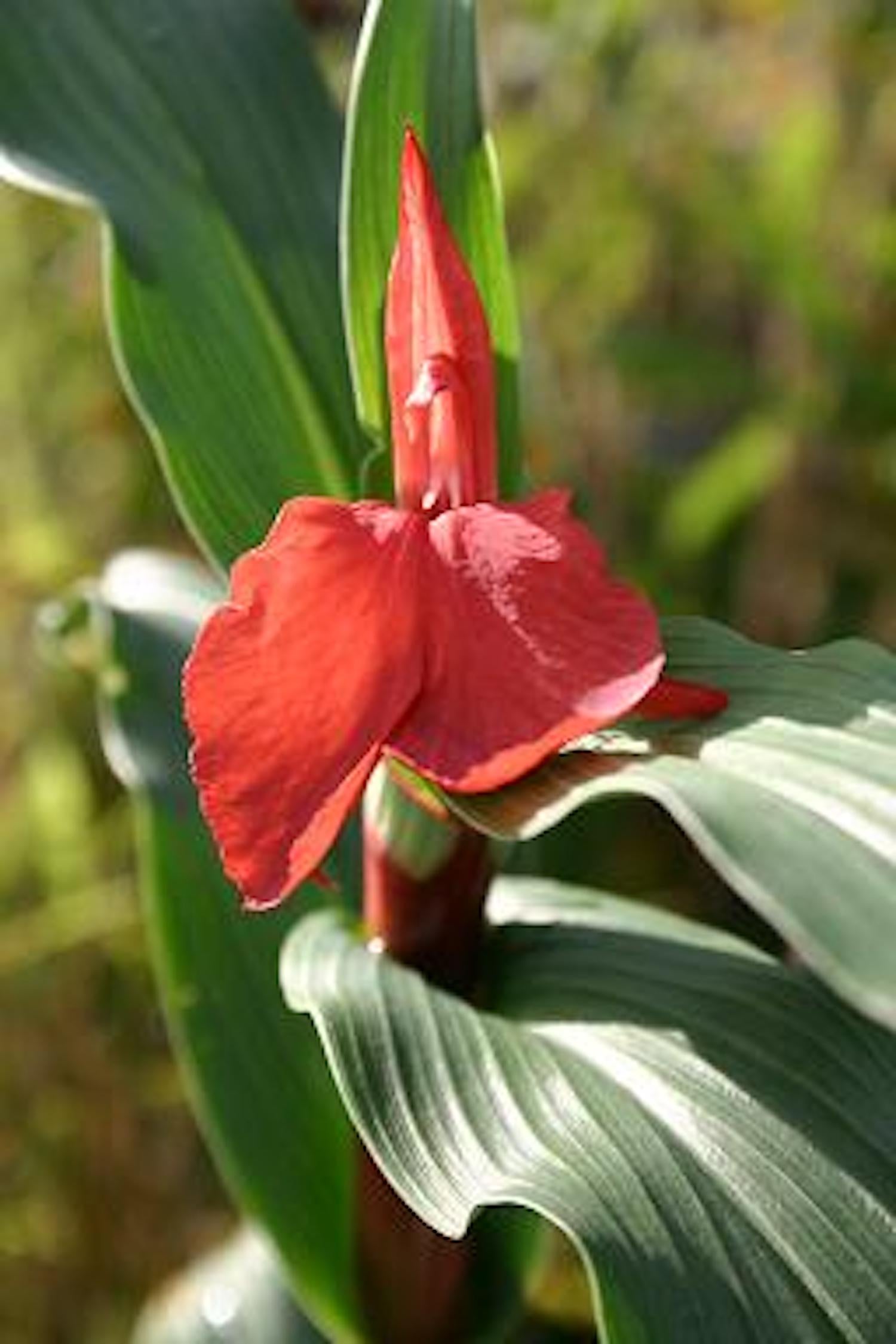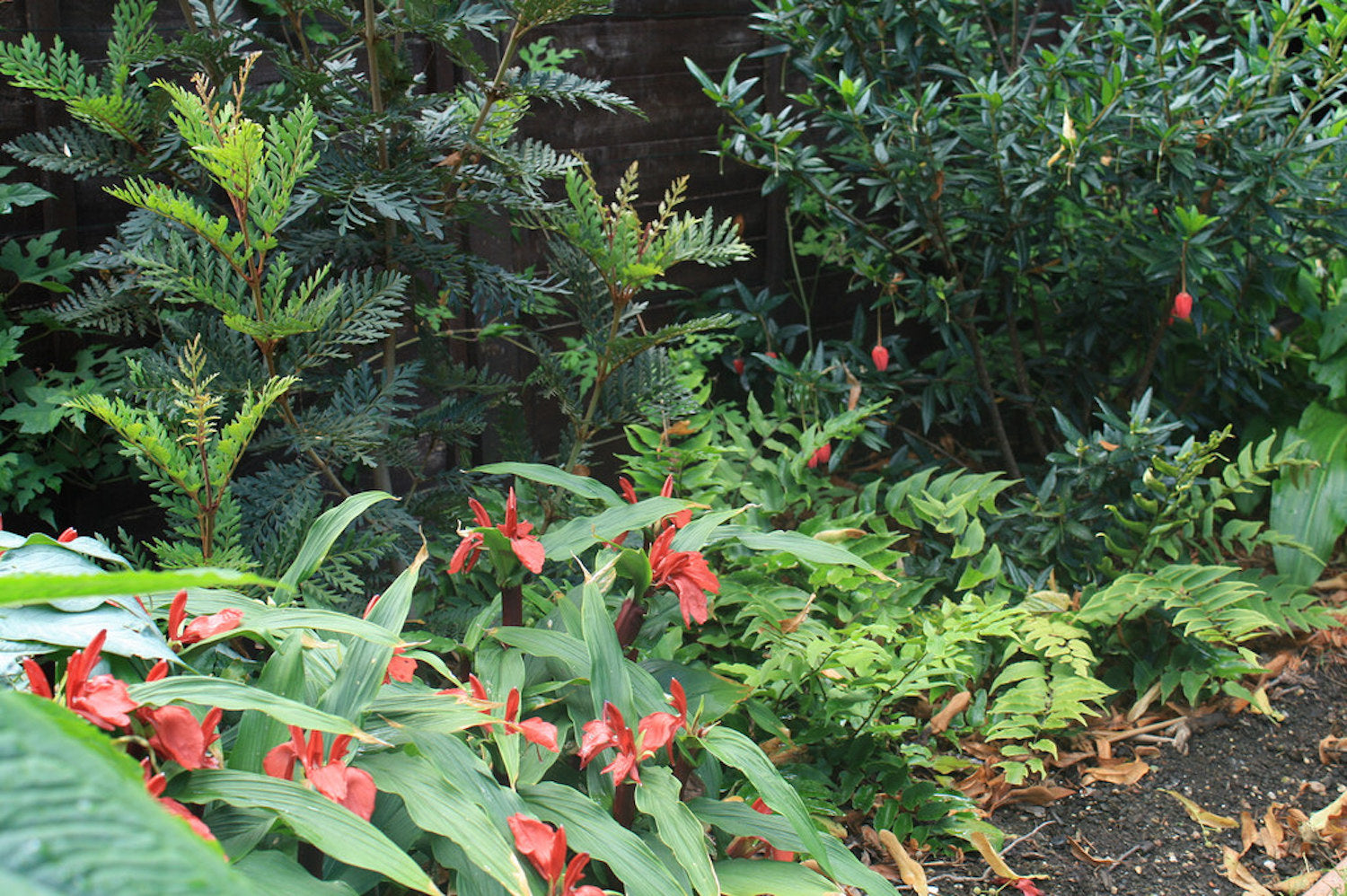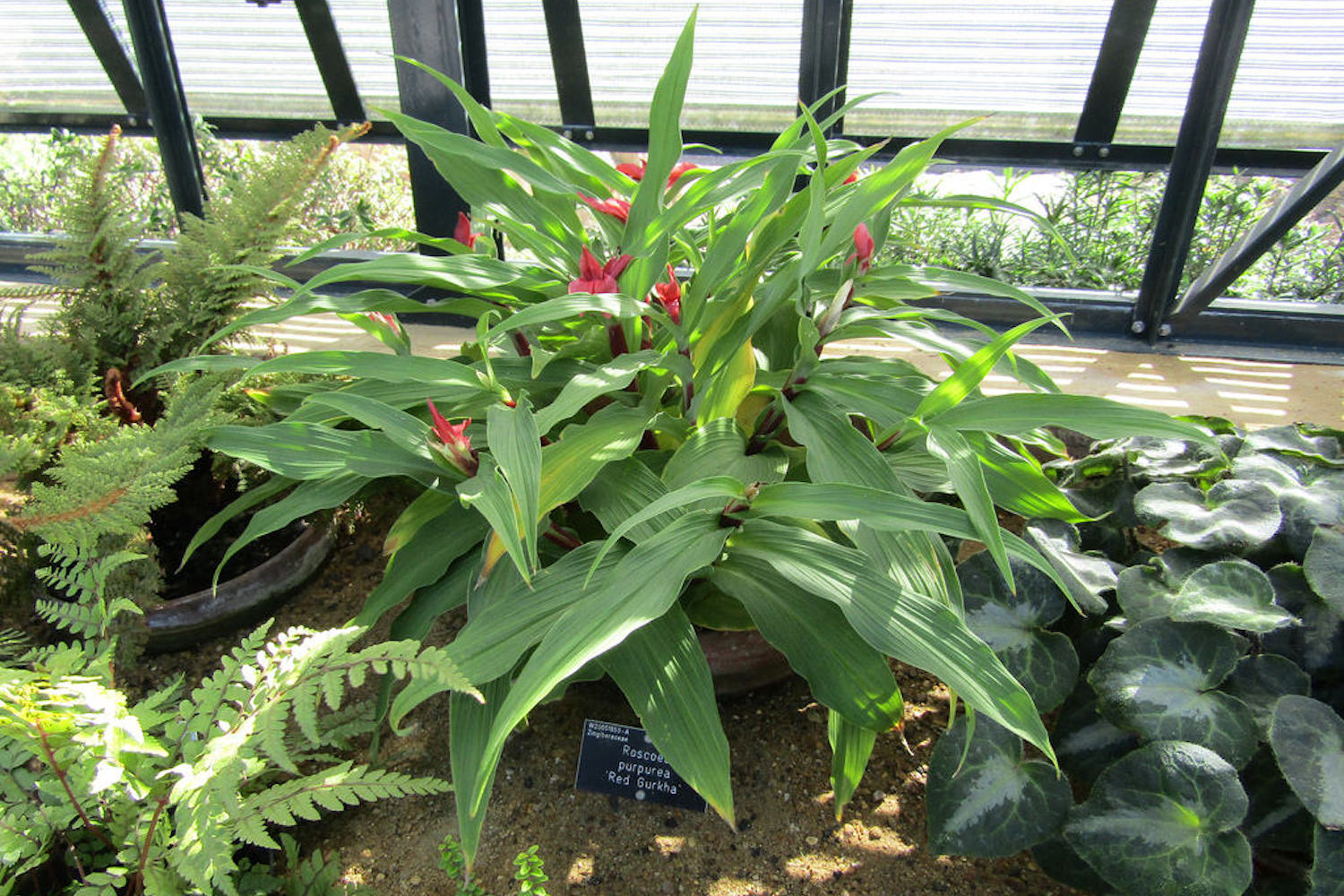Roscoea purpurea f. rubra
Approx. 0.5 litre pot
About this cultivar:
Roscoea purpurea f. rubra is sometimes know as ‘Red Ghurka’. It is a wonderful red ginger that should be in every garden (or conservatory!). It has a story.....
It was first brought into cultivation after the Oxford University Ganesh (Nepal) 1992 expedition by Bill Baker, Tom Burkitt, Jonathan Miller, and Rhidaya Shrestha. Not only did they find a red form of Roscoea purpurea but also a new species, Roscoea ganeshensis, as well as introducing R. tumjensis and reintroducing R. capitata and R. alpina.
In a letter to John Gimshaw, Bill Baker mentions "The Red Roscoea occurred around one particular village bearing flowers of a scarlet colour (not purply/red) on small stout plants. No other colour existed there ... it must have been a true-breeding pop and all indications suggest a new subsp. or maybe species."
John Grimshaw then says "In fact it turned out to be a colour variant of the widespread Himalayan species R. purpurea and when published in what was then The Kew Magazine in 2004 was given the evocative name 'Red Gurkha'. Although we all still know it as this, giving a single cultivar name to a wild population was unfortunate and has caused much confusion since, leading to the publication in 2007 of the epithet forma rubra for all examples of this colour form from the Ganesh Himal."
Needs a bit of shade, but will be fine in full sun (which doesn’t really exist in the British Isles) if it has enough water. In 2011 was awarded the Royal Horticultural Society Award of Garden Merit (RHS AGM).
- Position: Full sun, partial shade
- Soil: Almost any soil, grows well in Ballyrobert
- Flowers: July, August, September
- Other features: Royal Horticultural Society Award of Garden Merit (RHS AGM)
- Hardiness: H5 - Hardy in most places throughout the UK even in severe winters (-15 to -10°C), Fully hardy, grows well in Ballyrobert
- Habit: Columnar or Upright, clump forming
- Foliage: Deciduous
- Height: 30 - 45 cm (1 - 1.5 ft)
- Spread: 15 - 45 cm (0.5 - 1.5 ft)
- Time to full growth: 2 to 5 years
- Plant type: Herbaceous Perennial
- Colour: Green, red
- Goes well with: --
About this genus:
Roscoea is a genus of perennial plants of the ginger family (Zingiberaceae). Most members of the family are tropical, whereas Roscoea species are native to mountainous regions of the Himalayas, China and its southern neighbours. Roscoea was named by the English botanist James Edward Smith in 1806. The name honours Smith's friend William Roscoe, the founder of the Liverpool Botanic Garden (remnants of which can now be found at Croxteth Hall).
These rather exotic-looking plants look like irises to some and orchids to others. Their appearance seems to suggest a lack of hardiness to gardeners, however these tuberous, rooted plants are hardy if planted deeply. There are up to 17 species in all and eight are found in China. They are prompted into growth at the start of the monsoon season, emerging later than most plants, so they enjoy late-spring and early-summer rain but actively resent dry weather and scorching sun; not problem on these islands!
Roscoeas form tuberous roots that resemble small dahlia tubers. These push downwards to form vertical roots in the soil, before dying back in winter to leave a gap. These tubers are very vulnerable if left in a pot during winter, so if you buy a roscoea do plant it as soon as possible and as deeply as you can. Otherwise you may lose your plant.
The stems of roscoeas are formed from tightly wrapped leaves and these can colour up in some cases. The flowers are long-lasting in shadier positions, giving four to six weeks of interest. The flowers of most can shrivel in hot sun, so site them carefully.
They are extremely useful in woodland gardens, grown in light shade, as they perform after most woodlanders and extend the flowering season. They associate well with spring woodlanders, bulbs and ferns in the dappled shade provided by deciduous trees and shrubs. Other shorter forms, found naturally on screes in the wild, are perfect for the alpine slope in sunnier situations. So you do need to select your varieties and forms. Good winter drainage is essential for both types, but alpine screes and woodland gardens tend to have good drainage. They prefer semi-shade but will tolerate a sunny position if plenty of moisture is present during the summer. Avoid deep shade which will draw the plants up, making them floppy, and reduce leaf colour.
But don't worry too much, we grow a few of ours close to the edge of a border to 'suprise' people walking by!








